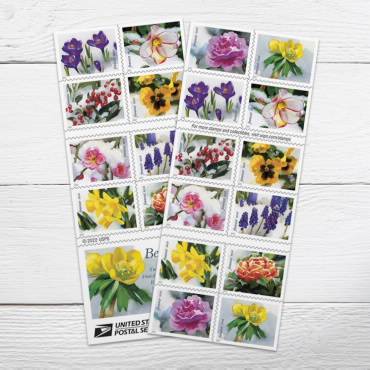Description:
While most plants and flowers die off during the winter, there are some that break the mold and grow despite the cold and snow. Some species bloom mid-winter in temperate climates, while others bloom toward the end of winter in more northern regions. In 2022, the USPS issued a set of 10 Forever stamps picturing flowers that can withstand the snow. The stamps show: camellia, winter aconite, crocus, hellebore, winterberry, pansy, plum blossom, grape hyacinth, daffodil, and ranunculus.
Most flowers that bloom in late winter or early spring must be planted the previous fall. Some other species that are popular include snowdrops, queen of the night tulips, winter jasmine, pieris, cyclamen, witch hazel, English primrose, glory of the snow, and spring snowflake. Many of these species require a period of cold temperatures in order to bloom. Otherwise, in warmer climates, many must be kept in the refrigerator to simulate what they would experience naturally.
It's fun to plan out a garden so there are flowers blooming all year long. That includes winter and early spring. To find out what plants to add to your own garden, be sure to first look up your United States Department of Agriculture hardiness zone. Then it's as easy as going to your local nursery and asking for advice on plants that will suit your zone. When you have beautiful blooms to look forward to, winter won't feel so long anymore.



